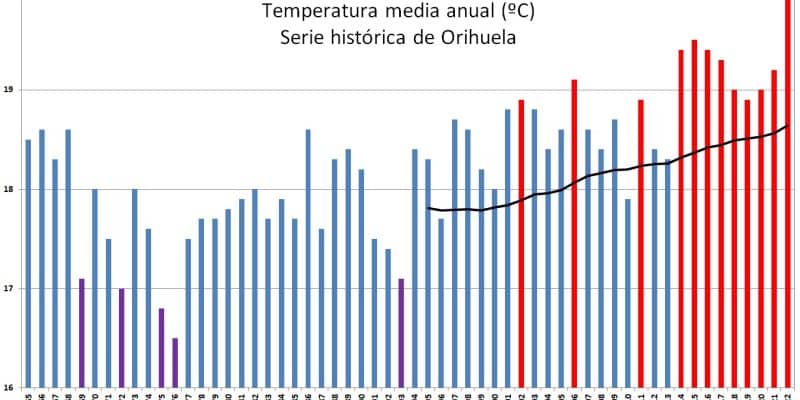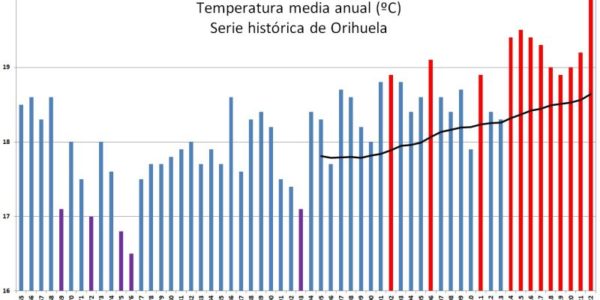The technical area of the Vega Renhace Plan of the Consell indicates in a report that 2022 has been the warmest year in Vega Baja since official records began. The data reveal that the annual average for this year has been at 20.0 ºC in the region, the highest since 1965.
After the record spring in terms of rainfall, the period May-December 2022 has been marked by the persistence of warm anomalies, causing this year to be by far the warmest since records were taken in Orihuela. The trend towards rising temperatures is unequivocal, as the last 9 years have been among the warmest in the series. These data can legitimately be applied to the entire Vega Baja region.
Since 1994, mean annual temperatures below 17.5 ºC have not been recorded. One of the effects of the progressive rise in temperature is that the sea is very warm. In the last three decades, the surface temperature of the Mediterranean Sea has risen by one and a half degrees. Without going any further, this year it touched 30 ºC off our coasts. In this way, the “refreshing effect” of sea breezes is clearly diminished, according to the study of the Vega Renhace Plan.
This factor proliferates the record number of tropical nights, which are those that the temperature equals or exceeds 20 ºC, having quadrupled from the late 70s to the present, adds the Vega Renhace technical area. In addition, “the night heat does not stop there, it is getting worse. We already live with the concept of equatorial or torrid nights, which are those when the temperature exceeds 25 ºC. In 2022, 7 nights of these characteristics have been recorded says the Vega Renhace Plan technician. The loss of climatic comfort is evident, since the extension of the warm season of the year has been prolonged towards spring and autumn. There is already talk of “five-month summers”, with May, June, July, August and September being the period where the summer atmosphere takes hold.
On the national level, the State Meteorological Agency has confirmed that 2022 has been the warmest year in the historical series in Spain, classifying it as “extremely warm”. The average annual temperature in our country as a whole will be above 15 ºC this year for the first time, thus exceeding the warmest years to date, 2017 and 2020. This represents a value of 1.6 ºC above the normal average. Except for March and April, which were cold months, the rest of the months have been warmer than normal, especially May, July, October and the still present month of December. It should be noted that the four warmest years in the series have been recorded since 2015, which inevitably leads to the impact of climate change.






